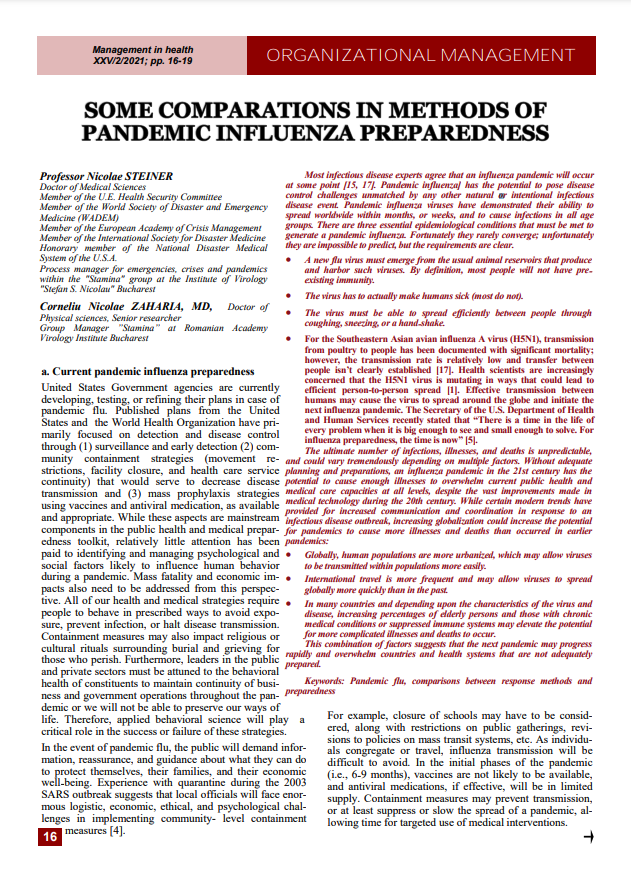Abstract
Most infectious disease experts agree that an influenza pandemic will occur at some point [15, 17]. Pandemic influenza] has the potential to pose disease control challenges unmatched by any other natural or intentional infectious disease event. Pandemic influenza viruses have demonstrated their ability to spread worldwide within months, or weeks, and to cause infections in all age groups. There are three essential epidemiological conditions that must be met to generate a pandemic influenza. Fortunately they rarely converge; unfortunately they are impossible to predict, but the requirements are clear.
• A new flu virus must emerge from the usual animal reservoirs that produce and harbor such viruses. By definition, most people will not have preexisting immunity.
• The virus has to actually make humans sick (most do not).
• The virus must be able to spread efficiently between people through coughing, sneezing, or a hand-shake.
• For the Southeastern Asian avian influenza A virus (H5N1), transmission from poultry to people has been documented with significant mortality; however, the transmission rate is relatively low and transfer between people isn’t clearly established [17]. Health scientists are increasingly concerned that the H5N1 virus is mutating in ways that could lead to efficient person-to-person spread [1]. Effective transmission between humans may cause the virus to spread around the globe and initiate the next influenza pandemic. The Secretary of the U.S. Department of Health and Human Services recently stated that “There is a time in the life of every problem when it is big enough to see and small enough to solve. For influenza preparedness, the time is now” [5].
The ultimate number of infections, illnesses, and deaths is unpredictable, and could vary tremendously depending on multiple factors. Without adequate planning and preparations, an influenza pandemic in the 21st century has the potential to cause enough illnesses to overwhelm current public health and medical care capacities at all levels, despite the vast improvements made in medical technology during the 20th century. While certain modern trends have provided for increased communication and coordination in response to an infectious disease outbreak, increasing globalization could increase the potential for pandemics to cause more illnesses and deaths than occurred in earlier pandemics:
• Globally, human populations are more urbanized, which may allow viruses to be transmitted within populations more easily.
• International travel is more frequent and may allow viruses to spread globally more quickly than in the past.
• In many countries and depending upon the characteristics of the virus and disease, increasing percentages of elderly persons and those with chronic medical conditions or suppressed immune systems may elevate the potential for more complicated illnesses and deaths to occur.
This combination of factors suggests that the next pandemic may progress rapidly and overwhelm countries and health systems that are not adequately prepared.

